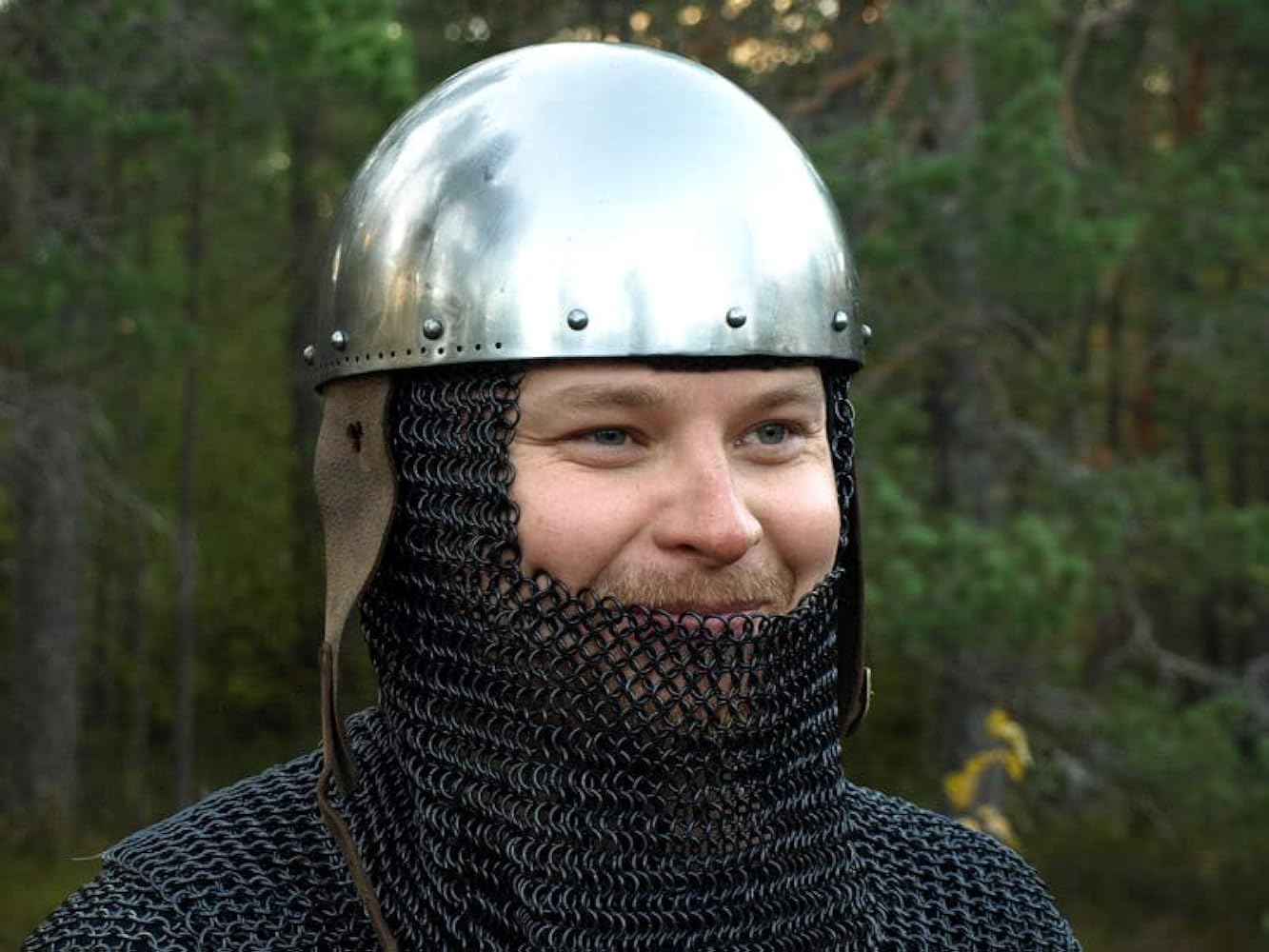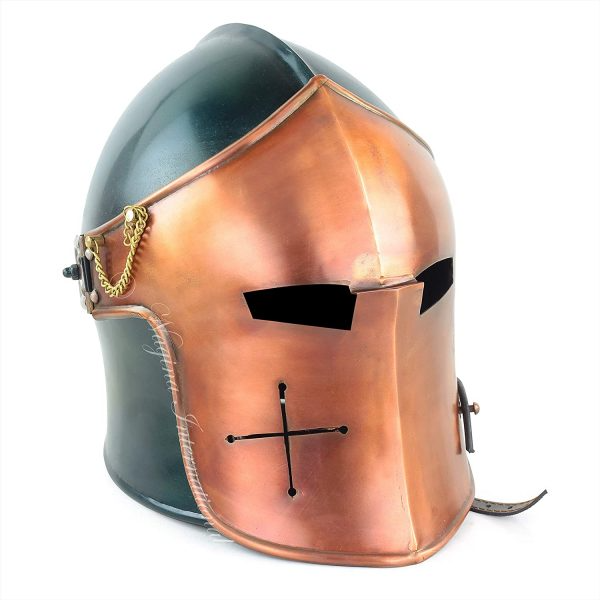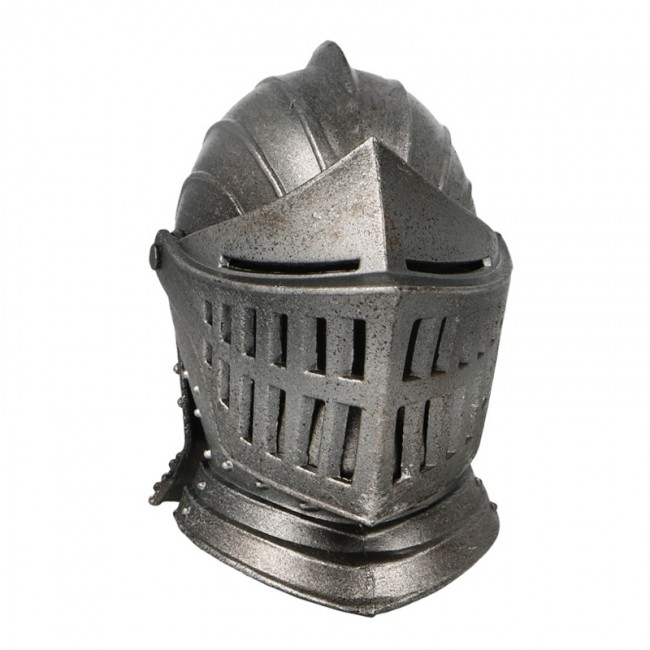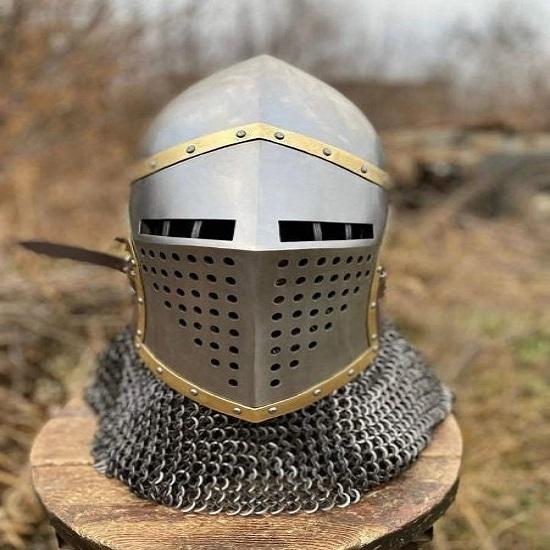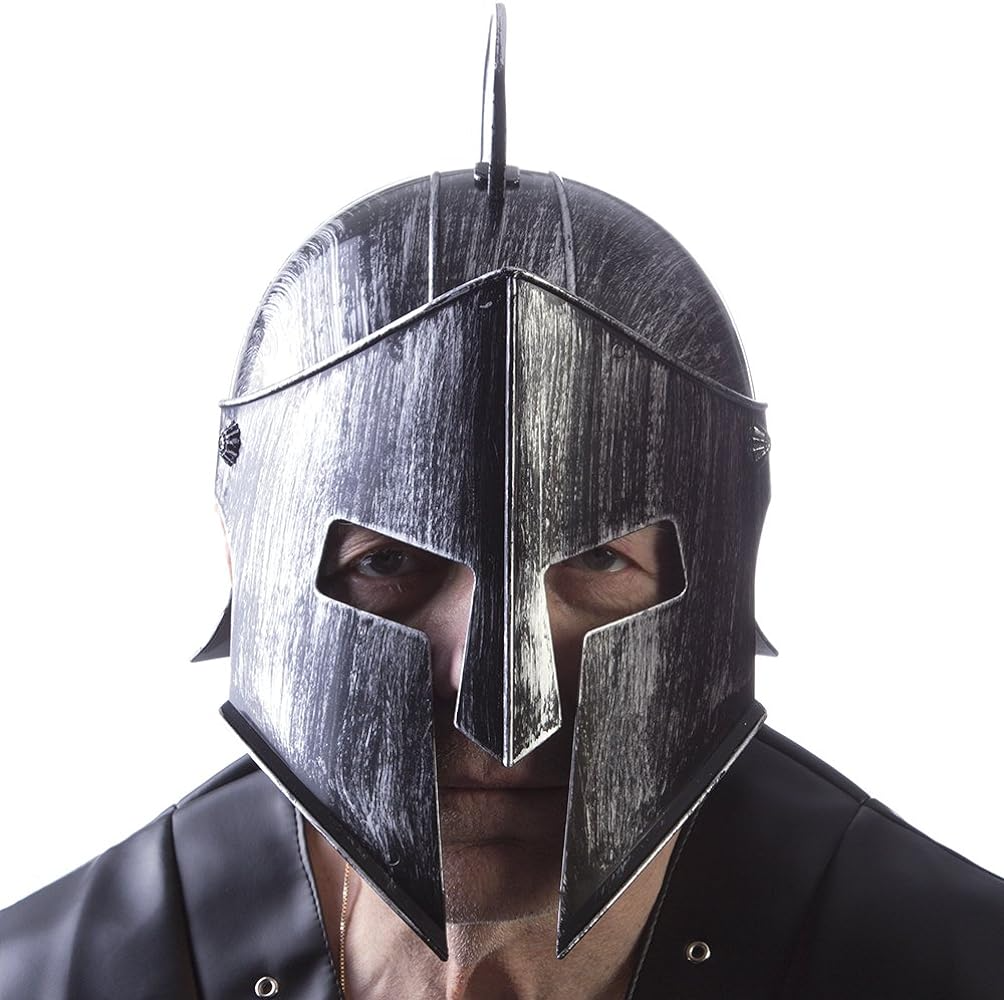Introduction
Amidst the clamor of medieval battles, one piece of armor stood as a beacon of resilience and nobility—the knight helmet. Far beyond a mere protective gear, this iconic headpiece encapsulates the essence of knighthood, embodying the chivalric ideals of bravery, loyalty, and honor. In this comprehensive exploration, we delve into the intricate history, design evolution, and cultural significance of the knight helmet, unraveling its role in shaping the identity of these legendary warriors.
Historical Origins: From Practicality to Pageantry
The origins of the knight helmet can be traced back to the early Middle Ages, when crude leather and metal caps offered minimal protection to warriors on horseback. As warfare evolved and armor became more sophisticated, so did the helmet. By the High Middle Ages, knights donned the iconic great helm, a towering structure of steel designed to withstand the impact of swords and arrows. This evolution was driven by the dual necessities of enhancing safety and projecting an imposing presence on the battlefield.
The Great Helm: Tower of Invincibility
The great helm, with its distinctive bucket shape covering the entire head and extending down to the shoulders, symbolized the pinnacle of knightly defense. Its solid construction provided unparalleled protection against blunt force trauma and piercing weapons, albeit sacrificing peripheral vision and auditory sensitivity. Its very appearance instilled fear in adversaries, making it a psychological weapon as much as a physical one.
Transition to Visored Helmets: Balancing Protection and Visibility
As combat tactics shifted towards more agile forms of warfare, the cumbersome great helm gave way to visored helmets. These designs, such as the bascinet and later the sallet, featured hinged or removable faceplates, offering knights better visibility and ventilation without compromising safety. This innovation marked a significant step towards practicality, reflecting the knight’s evolving role from a stationary defender to a mobile combatant.
The Artistry of Knight Helmets: Expressions of Identity
Beyond their functional aspects, knight helmets were adorned with intricate decorations that spoke volumes about the wearer’s status, allegiances, and personal flair. Heraldic symbols, etchings, and precious metals transformed these utilitarian objects into wearable art.
Heraldry: A Visual Language of Knighthood
Heraldic crests and coats of arms emblazoned on helmets allowed knights to be recognized on the battlefield, even amidst the chaos of combat. These emblems encoded family lineage, achievements, and even moral values, fostering a sense of pride and belonging among knights and their houses. The vibrant colors and bold designs also served as morale boosters for allies and intimidations for foes.
Decorative Flourishes: Crafting a Noble Image
Elaborate embellishments such as gold leaf, engravings, and intricate metalwork further elevated the knight helmet from a tool of war to a status symbol. Such artistic flourishes not only demonstrated the knight’s wealth but also his cultural sophistication and appreciation for the arts. Helmets crafted for parades and tournaments often showcased the most opulent designs, showcasing knightly prowess during times of peace.
Modern Revival: Collecting and Replicas
The fascination with medieval history and the romanticism associated with knights has experienced a resurgence in recent years, sparking a modern revival of interest in knight helmets. This revival is not only confined to historians and enthusiasts but has also permeated popular culture, influencing fashion, film, video games, and even home decor. As a result, collecting authentic replicas of knight helmets has become a popular hobby for many.
Historical Significance and Design
Knight helmets were integral parts of a knight’s armor, designed primarily for protection during battles and tournaments. They evolved significantly throughout the Middle Ages, from simple cone-shaped helms to more sophisticated designs like the great helm, bascinet, and eventually the iconic close helm with a visor. Each design reflects advancements in metalworking technology and battlefield necessities.
Collecting Knight Helmets
Authentic Replicas
For collectors, the quest often lies in acquiring replicas that closely mimic the historical originals in terms of materials, craftsmanship, and detail. These replicas are meticulously going to craft using traditional methods or modern techniques like 3D printing, ensuring historical accuracy. Some are made from metals like steel, while others may use lighter materials for display purposes.
Sourcing and Authentication
Collectors often source their replicas from specialized armorers, historical reenactment suppliers, or online marketplaces dedicated to historical artifacts. It’s crucial for collectors to verify the authenticity and quality of the replicas they purchase, often through research, reviews, or consultation with experts in the field.
Display and Care
Displaying these helmets can be an art form itself, with collectors arranging them in home offices, libraries, or dedicated display rooms. Proper care involves keeping them away from direct sunlight, humidity, and dust, and occasionally polishing metal pieces to maintain their luster.
Cultural Impact and Pop Culture
The modern fascination with knight helmets extends beyond collecting. In pop culture, movies such as “Braveheart,” “Kingdom of Heaven,” and the “Game of Thrones” series have reignited public interest in medieval warfare and attire. Video games set in medieval times also feature intricate helmet designs, further fueling the desire for authentic replicas among fans.
Educational and Reenactment Purposes
Replica knight helmets are also going to use extensively for educational purposes and historical reenactments. Schools, museums, and historical societies employ them to provide a tangible connection to the past, enhancing learning experiences. Reenactors value them for their ability to immerse themselves in the period’s lifestyle and accurately depict historical events.
In conclusion, the modern revival of interest in knight helmets as collectibles and replicas signifies a broader cultural fascination with medieval history. It combines appreciation for historical craftsmanship, a love for fantasy and adventure, and a desire to connect with the past in a tangible way. As technology advances and historical knowledge expands, this hobby is likely to continue thriving, offering collectors a window into a bygone era.
Conclusion
The knight helmet, through its transformation from a crude shield to a masterpiece of protection and symbolism, stands as a testament to human ingenuity and the pursuit of glory. More than a piece of armor, it represents the ideals of knighthood—valor, honor, and the unyielding spirit of those who wore it. Today, whether displayed in museums, cherished in private collections, or brought to life in reenactments, these helmets continue to inspire awe and admiration, ensuring the legacy of the knights lives on.

